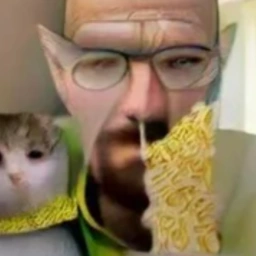When future humans look back at the development of AI, some moments will stand out as historic.
They'll argue about which moment was more legendary: the invention of backpropagation! No, it's AlexNet ushering in deep learning. Who could forget Transformers is All You Need? Surely it must be AlphaGo beating Lee Sedol. Midjourney's #1 discord server. ChatGPT.
But a few fleeting moments - a little less well acknowledged, a whole lot less significant - will dominate the memories of a few blessed to have experienced their sheer weirdness.
The short-lived era of DALL·E Mini, later rechristened as Craiyon, is such a moment. A fugitive golden hour when AI-generated art existed in a beautiful state of grotesqueness, democratized access, and unbridled experimentation.

Just good enough to slap a UI on
DALL·E Mini was an unexpected protagonist in the AI "art" revolution, not because it was good, but because it was first, free, and functional.
While more sophisticated models remained behind institutional (fire)walls amidst a period of "too dangerous to release" crisis narratives, artist Boris Dayma decided to toss a simple text box and a little orange button on a website, inviting anyone with an internet connection and a minute to participate in his grand little experiment. Sam Altman would do well to take a leaf out of Boris's book.
The results were gloriously absurd. Users delighted in prompting the system with juicy scenarios, waiting a few minutes each time to roll 9 images in its signature 3x3 grid:








DALL·E Mini's tendency to produce warped faces, melted hands, and inexplicable artifacts became features rather than bugs, birthing a cursed aesthetic vocabulary I and many came to love. The images were so fucking bad they were good.
Social experimentation
The imperfections in these early models created space for human understanding, meaning-making, and meme-making.
People used biases present in the models to make jokes about politicians, fictional characters, and pop culture. Absurdist stonks dominated this meme exchange (when anything is possible, most things are absurd).
Every time someone spent a minute only to end up with gross human hands or faces, pure black images, or horrifying repeated patterns, they built a small bit of intuition for how these things are made.
People quickly figured out tricks, like saying "unreal engine" to boost realism or exploiting glitch tokens to peek into the model's latent space. These hacks spread fast, fueling further exploration and vibrant discourse. It felt sort of like the early days of the internet, or going to college with a bunch of weirdos (in the best way possible).
Consciously preserving space for the weird and wonderful
Today's image and video generators are already powering early adopters and the next wave of creators. Flux 1.1 Pro vs. Midjourney v6.1 dominates the conversation today, and the world is better for it. Progress and commercialization are inevitable and undeniably valuable, and we see clear paths to productivity across visually creative domains.
The sun set long ago on DALL·E Mini as a cutting-edge research demo. Yet its imperfections reveal something more truthful than polish ever could. In the pursuit of faster, better, cheaper - find beauty in the short-lived spaces between.
